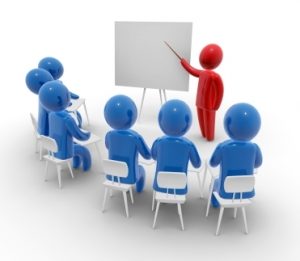
Importance of Updated Safety in the Workplace
Safety in the workplace is essential. Part of safety protocol entails inspecting and replacing any damaged equipment. Personal protective equipment (PPE) applies to any industry. It’s helpful to know what PPE your team should wear as well as the stationary equipment available to keep everyone safe.
Why Is it Important to Inspect for Damage and Replace Equipment?
There are several factors to consider when inspecting damaged equipment and replacing it. Dangerous and risky job sites require that personal protective equipment, like helmets, must always be worn to avoid fatal accidents such as falling objects. All PPE must be working correctly and replaced regularly.
Inspect and Replace PPE in a Timely Manner.
Identify the correct time to replace PPE. Replacing equipment too early is a waste of resources to pay for new equipment. However, waiting too long to replace PPE is risky because, if equipment fails, accidents and injuries happen.
Develop Standards and Protocols for Inspecting PPE.
Establish inspection timelines, standards and protocols. For example, everyone could be responsible for their personal protective equipment, or one or two people could be assigned responsibility for inspecting the equipment. If and when there is an issue with the equipment, it should immediately be taken out of circulation and replaced. Therefore, you should always have extra PPE on hand.
When creating inspection protocols, you need to be aware of what to look for when inspecting PPE. Some examples of what to inspect include:
Use a PPE Grading System.
Create a PPE grading system. A grading system should be common to everyone and helps your employees instantly know when equipment should be replaced. PPE may need to be replaced while it’s getting fixed or may need to be thrown out altogether. It all depends on the type of job.
Use Occupational Safety and Health Administration Guidelines.
Refer to The Health and Safety Executive (HSE) and Government guidelines. Be sure that your team knows exactly what the guidelines are and be sure they are met at all times. These guidelines can be included in your inspection and replacement requirements.
COVID and PPE
When managing the risk of COVID-19, additional PPE beyond what you usually wear may not be beneficial. This is because COVID-19 is a different type of risk to the risks you normally face in a workplace, and needs to be managed through social distancing, hygiene and fixed teams or partnering, not through the use of PPE.
The UK Government has published COVID-19 Secure working safely guidance for workplaces that provides a hierarchy of risk control measures that employers and the self-employed are expected to follow when reviewing their risk assessments for COVID-19 hazards.
When an Incident Occurs, Take Action Immediately.
Take action after an incident. Any affected PPE should always be replaced. Depending on the incident, it may be possible to save the gear after being inspected. Otherwise, it should be replaced.
Don’t Forget About Stationary Equipment
Be aware of stationary equipment like machinery and the need to stand behind a protective shield. This equipment also requires you to inspect, repair, and/or replace the stationary equipment as well.
Be Consistent.
Though replacing and inspecting equipment may seem like a hassle, it is better to be safe than sorry. Make sure your workers are aware of necessary PPE and inspect their gear at the beginning of a shift or before starting a major project. You do not want to risk an accident.
What PPE Wear Is Available?
PPE wear includes head protection, eye protection, hearing protection, good respiratory protection, correct gloves, footwear, and correct work clothing.
Here are examples of the different types of PPE wear available.
Head Protection
Invest in a good helmet. Today, there are many customised features to choose from such as adjustable interior harnesses and sweatbands. Ensure PPE is compatible, for example, wearing a safety hat in conjunction with ear defenders.
Eye Protection
Work-related eye injuries unfortunately happen to hundreds of people daily worldwide. Safety glasses can prevent these injuries. Welding goggles and shields can protect you from bright light or infrared radiation.
Hearing Protection
In a high sound level environment, earplugs would be comfortable. However, ear defenders may be a better choice to have on the shop floor or construction site because you can take them on and off easily and they’re more hygienic.
Respiratory Protection
Masks are necessary when coming in contact with hazardous materials like vapour, smoke, or powder. Dust masks protect you against fine dust and other dangerous particles. Full-face masks protect you against toxic materials. These masks will protect your nose and mouth from pollution.
Hand Protection
There are different types of gloves depending on your occupation.
Protective Footwear
Different types of protective footwear serve different purposes
Correct Work Clothing
Specific types of work clothing can protect against accidents in a crowded workshop. High-visibility vests or jackets can keep you visible in dark or crowded conditions. Pants made with strong fabric will protect your skin and resist wear and tear.
Ensure the team are trained and competent to carry out their tasks.
Safety in every workplace is a must to provide a safe work environment, and keep you and your team safe.
Contact us for further information.